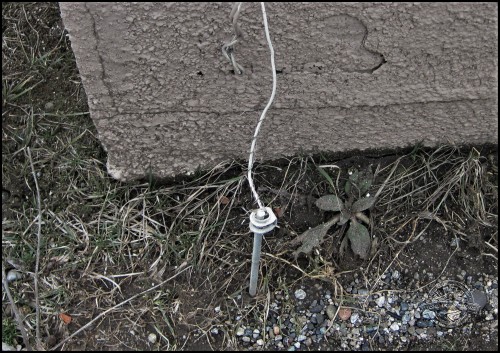Wenatchee Home Inspection- Electrical Service – 120V vs. 240V
When performing home inspection I will have discussions with my clients on the home’s electrical supply and how it is wired.
Out of this it was apparent to me most people do not have a basic understanding of how electrical power is distributed to and throughout the home.
This is a very general description of how these electrical distribution systems and home distribution wiring works.

In North America, residential and light commercial customers use what is referred to a “Split-Phase 240/120V system” electrical system.
Electricity is transmitted at very high voltages (110 kV(kilovolts) or above). This is to reduce the energy lost in very long distance transmission of electricity. This primary power is usually transmitted through overhead or underground power lines.
To get electrucity to the home they will use a step down transformer from the primary distribution power. This voltage is now reduced for use in a residential/light commercial applications. This transformer is usually located on the utility pole or it can be a ground transformer.

Most public utility companies will limit the maximum “Single Phase” 240 Volt Service to 600Amps (240V X 600A = 144kVA (kilovolt /amps)). There are some utilities that use an even lower limit of 400 Amps, which is 96kVA
A split-phase (240/120V) power system is really what is referred as a “3-wire, single-phase, mid-point neutral system”. This consists of two 120V “voltage sources”; connected out-of-phase by 180 electrical degrees with a neutral connection between them.
The voltage if using both power conductors (Line-Line, or more commonly known as Hot-Hot) is 240V, so the voltage on each line conductor (hot wire) with a neutral is 120V. (Note: voltages normally can vary in real life +/- 10%)
Volts (E) are the measure of electrical force in a system and amps (I) is the measure of how much electricity is flowing. Watts  is the term used for the rate of consumption in a given application (like what a light bulb uses, such as a 60w or 100w bulb).
is the term used for the rate of consumption in a given application (like what a light bulb uses, such as a 60w or 100w bulb).

Here is an example of a 1200W microwave used in both a 120V vs. 240V circuit.
We have 1200W appliance (the microwave), Watts= Volts x Amps, so if we use a 120 v circuit the microwave would be drawing 10 Amps (1200w/120v) on the single hot conductor. If it was a 240volt circuit (2 hot conductors) it would be drawing 5 amps per hot conductor (1200w/240v) for 10 total amps on both wires together.
Most of the standard wiring in the home is 120V, this is for lighting and small appliances and uses this line(hot)/neutral configuration. You will see these typically at the receptacle (outlet/light fixture) as black and white wires. In the panel the black will be on a single pole breaker and the white will be on the neutral/ground bus.

Now with large appliances, such as heaters, cooking equipment, clothes dryers, and air-conditioners they are connected across the two hot conductors (L-L) and operate at 240V. This circuit requires less current (amperage) per conductor so smaller conductors (wires) can be used. Since the current in each leg of a split-phase system is 180 degrees (out-of-phase), no neutral wire is needed since there is zero current when the load on both legs are equally and or perfectly balanced (i.e. consuming equal amounts of power). So in a 240v system there will be no white wire, just either two black wires or more commonly a black and red conductor or balck and white wire marked with black to designate it as ahot conductor. This circuit will be on double-pole breaker in the panel.


This is a very general explanation of your homes electrical system.
When looking for a home inspection service I would be honored to help you make an informed decision on the property.
“Inspecting the World-One Home at a time”
NCW Home Inspections, LLC is located in Wenatchee Washington serving Chelan County, Douglas County, Kittitas County, Okanogan County and Grant County Washington and the cities of Wenatchee, Leavenworth, Cashmere, Orville, Cle Elum, East Wenatchee, Quincy and many more…
NCW Home Inspections LLC-509-670-9572










